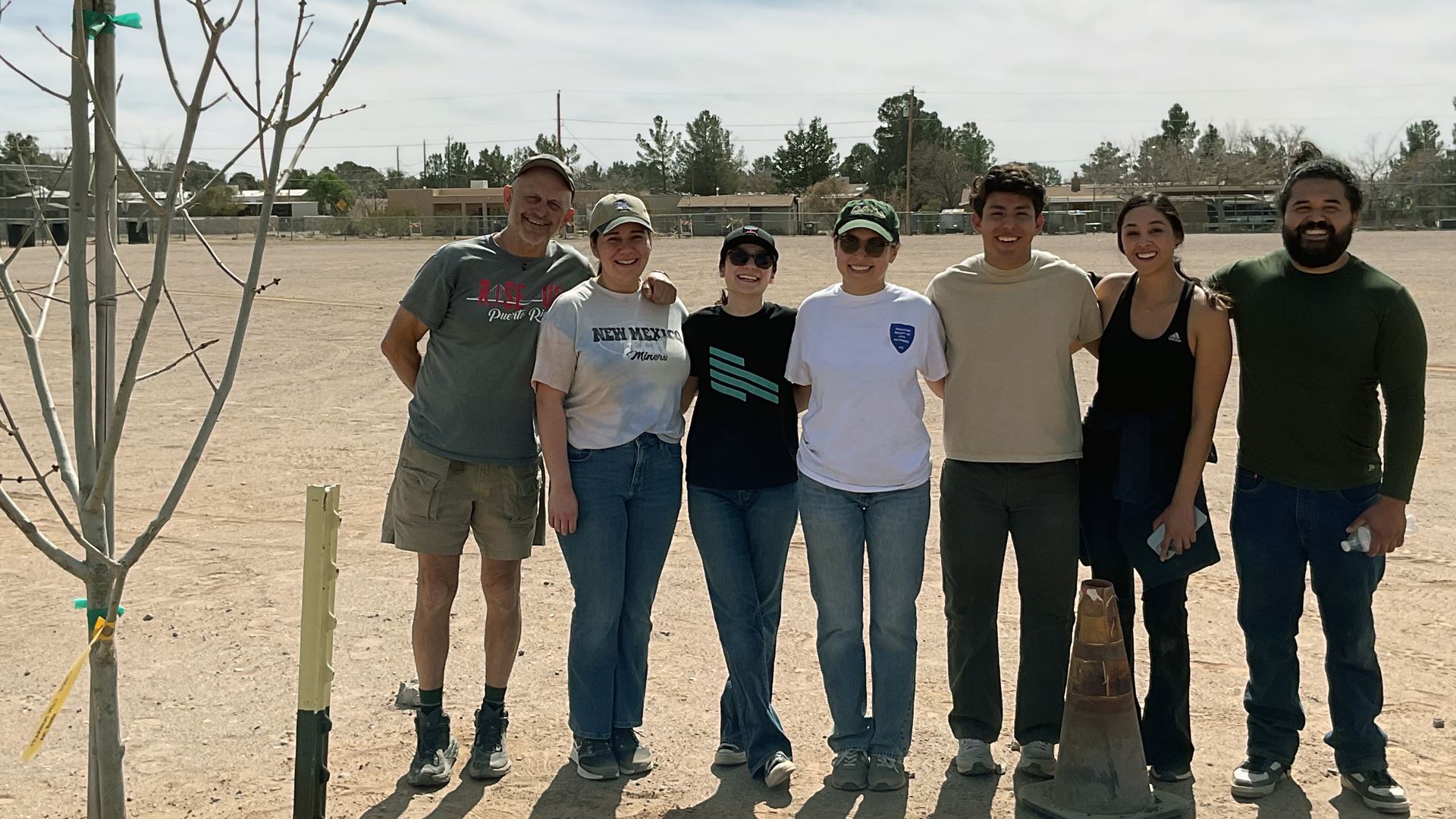With engineering skills, heart and lots of sweat equity, New Mexico State University Aggies Without Limits students and members of the Pueblo of Tortugas toiled side-by-side to install 900 feet of waterline, plant and fertilize 27 trees, as well as groom five older trees around the community’s baseball field.
Completed in late February, Tortugas is one of four Doña Ana County civic projects for which New Mexico state Sen. William Soules allocated funds in 2024 and in 2025. Soules sought AWL to identify and complete the projects. In fall 2024, the group created a community walking trail in La Union, about 33 miles south of Las Cruces, removing fences, grooming a pathway, installing irrigation and planting trees. Plans have begun for the group to construct a shade structure comprising 5,000 square feet of canopies for an elementary school in Chaparral, some 35 miles southwest of Las Cruces. AWL is also planning to install ventilation to help reduce winter cold and summer heat in encampments at the Mesilla Valley Community of Hope.
The Tortugas plot of land anchored by the Shrine and Parish of Our Lady of Guadalupe Church is more than a ball field; it’s where Tortugas holds traditional tribal ceremonies, dances and fiestas, as well as where its three baseball teams play. In a few years, there will be shade.
Although small, the pueblo members numbering approximately 600 actively continue traditions that began before the city of Las Cruces was founded in 1849. The area of land was patented in 1907, deeded to tribal members and was officially incorporated in 1914. Located south of NMSU and Interstate 10, Tortugas is fully self-supported, being the only pueblo in the United States not funded by the state or federal government. The tribe raises funds by holding enchilada dinners in the spring and fall. The annual Tortugas Pueblo Fiesta of Our Lady of Guadalupe, a three-day celebration observed yearly Dec. 10-12, incorporates Native traditions with Catholic influence.
“Giving back is the whole mission of Aggies Without Limits,” said civil engineering student Taylor Aragon, adding that the group votes on which proposed projects to pursue. “These projects help us connect with the community. There’s so much history here.”
“We approached the project with mutual understanding,” said Tortugas Capitan de la Guerra Rudy Nevarez, who planted some of the original trees when he was 10 years old. “Planning took about seven months of meetings and talks for this project. Everyone puts in effort; we utilize all and work together.”
“It changes your perspective on life,” said chemical engineering major Estefania Sepulveda. “Even if you can’t change the whole world, you can change much.”
“Estefania and Taylor were the two project managers for the Tortugas project,” said Emeritus Professor Kenny Stevens who founded the AWL group in 2007. “They have probably put in a hundred hours between them putting the whole thing together.”
Dominic Fierro, president of the Tortugas Corporation, validates that thought.
“This will leave things better for the next generation,” he said. “That’s what our elders did for us.”
While Aggies Without Limits, now led by Stevens and Professor Paul Furth, is recognized for larger international projects, they continuously perform service projects in Las Cruces and surrounding communities. With the exception of the projects mentioned here, they raise funds for their other projects with “Daisy Chains” for which they can be hired to perform odd jobs such as moving furniture, landscaping and yard work.
Professor Cynthia Bejarano, College of Arts and Sciences Community Engagement Fellow, made the connections between AWL and the La Union and Tortugas communities. Bejarano has worked with both communities as well as with AWL. Bejarano is also principal investigator for the College Assistance Migrant Program. The program’s goal, since its inception in 2002, is to help migrant or seasonal farm-worker students attend college and that they graduate from NMSU with a bachelor’s degree. Many of the CAMP students over the years have been engineering majors and have participated with AWL.
“There are needs all across Doña Ana County,” said Bejarano, who also lent a hand in the work at Tortugas. “I am very grateful for AWL’s good work and goodwill to help. These projects are symbolic of NMSU’s efforts to give back to their neighbors and build long-lasting community relations and a legacy of community service.”
To learn more about the Pueblo of Tortugas, visit https://tortugaspueblo.com.
For more information about AWL, visit https://aggieswithoutlimits.org.

